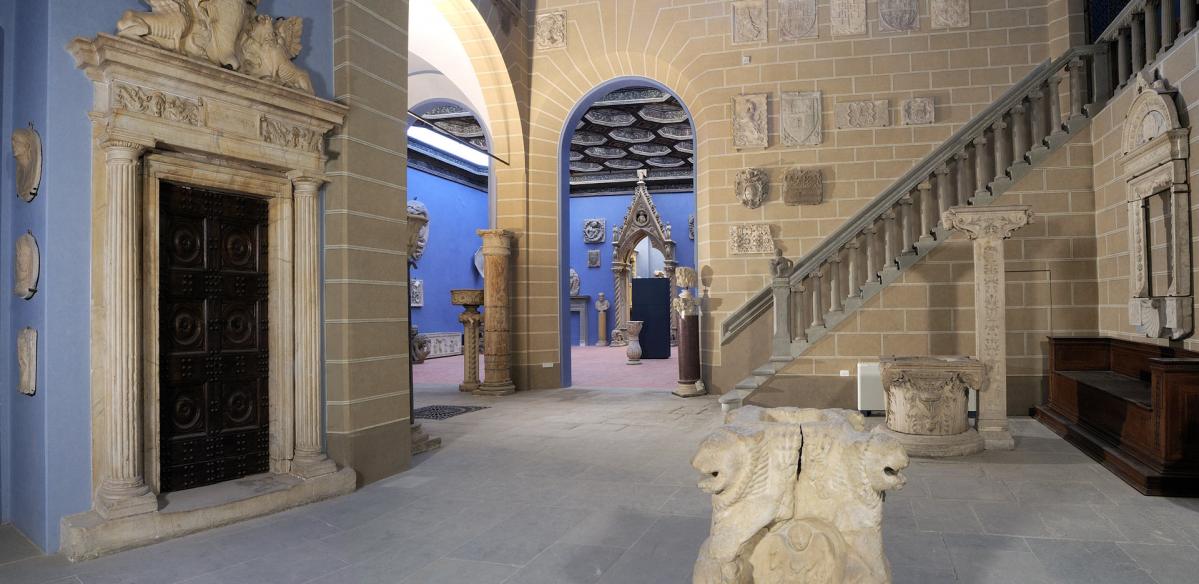Nikola Benin, Ph.D

The last weekend I went to Florence for a two days holiday of Renaissance full immersion: in particular Stibbert Museum, Bardini Museum and Uffizi.
The Stibbert Collection has 9 spadoni of classic good length (4 + 4 of racks + 1 on mannequin) + 2 swords of shorter length paired with armors. Those two seems more cryptic to categorize due to an apparently shorter handle, but both have rings and the impression they leave is massive, sturdy. My study make me suppose I could call them spadoni as well: there is no real reason not to… They seems too heavy to be hold on a single hand, even for a knight. The presence of the armor perhaps can bias their perception as not spadoni. You can judge those hybrids by yourselves.
Unfortunately the Stibbert Foundation didn't let me analyze them deeper, but I am sure that this kind of work needs a bit of time to 'expand'.
They are all pieces of a particular shape and all of them fed my curiosity due to details and artistic decorations that make them stand out when compared with the Venice ones, for example.
Unfortunately the Stibbert Foundation didn't let me analyze them deeper, but I am sure that this kind of work needs a bit of time to 'expand'.
They are all pieces of a particular shape and all of them fed my curiosity due to details and artistic decorations that make them stand out when compared with the Venice ones, for example.
Bardini museum has 'only' 4 spadoni, but how nice they are!
One has a characteristic pine cone shaped handle; another has a simple shape that makes it feel like a early weapon, like the one in Brescia MAM; the third is badly conserved and the guard doesn't express the idea of a refined art, at least nowdays. The fourth is the one which I prefer the most and a book published by the museum dates it between 1525 and 1575 circa. The book expresses what I thought the first time I saw it in a picture time ago: it has no blade nor tip, and probably it is a trainer! To my knowledge, the only survived example which we can admire and that could be similar to what Figueyredo calls a 'montante negro'.
One has a characteristic pine cone shaped handle; another has a simple shape that makes it feel like a early weapon, like the one in Brescia MAM; the third is badly conserved and the guard doesn't express the idea of a refined art, at least nowdays. The fourth is the one which I prefer the most and a book published by the museum dates it between 1525 and 1575 circa. The book expresses what I thought the first time I saw it in a picture time ago: it has no blade nor tip, and probably it is a trainer! To my knowledge, the only survived example which we can admire and that could be similar to what Figueyredo calls a 'montante negro'.
Last: a detail of a painting from the Uffizi, painted by Hugo van der Goes. The painting is dated from 1476 to 1478 and, even if the photo has grain and is not very sharp, you can see the application of a little side ring in what we can consider a classic medieval two handed sword of the light and pointy kind. A ring doesn't make a spadone, I state this clearly, but pretty early application. I post this because I know that someone was interested by this kind of info.
I hope to find some time to write further considerations on what I saw as this post is long enough right now.
I conclude saying that I hope to get a second visit to Bardini museum: the staff was so kind to give me the opportunity to contact the curator and this could lead to a data collecting session, which is what I am aspiring to. However, it is too early to consider it set.
I conclude saying that I hope to get a second visit to Bardini museum: the staff was so kind to give me the opportunity to contact the curator and this could lead to a data collecting session, which is what I am aspiring to. However, it is too early to consider it set.
Note: sorry for the grain and bad lighting of the pictures, but flash was not allowed and some of the rooms (Stibbert in particular) were really shadowy.
Няма коментари:
Публикуване на коментар